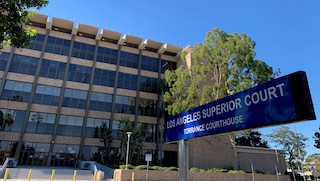The answer to the rhetorical question posed in the title to this article is yes, but less so now as compared to in the past.
The recent decision (May 31, 2018) in People v. Charles Edward Case (2018 DJDAR 5169) by the California Supreme Court, showcases how the law has changed over time, although restitution was certainly not one of the most important issues in the case.
In a Nutshell: The amount of restitution that can be ordered paid by defendant is limited by defendant’s ability to pay (People v. Vieira (2005) 35 Cal.4th 264, 305).
In 1993, Mr. Case allegedly committed first degree murder of Val Lorraine Manuel and Gary Duane Tudor while committing a robbery of a bar and card room called The Office in Sacramento. The murder weapon was a firearm.
After the penalty phase of the trial, Case was sentenced to death and to a consecutive term of three years in prison on the robbery count as well as two five-year enhancements for personally using a firearm during the commission of the murders. The judge also imposed a restitution fine of $10,000 and ordered direct victim restitution in the amount of $4,000.
In order to preserve several issues relating to his conviction and sentence, Case appealed the constitutionality of California death penalty statutes “that he acknowledges this court previously has considered and rejected.” Such challenges were made as a way to present other issues for the Supreme Court to rule upon. In this case, Case challenged many of the rulings in the trial court, which included alleged Miranda violations by an investigating detective and the inevitable discovery of other information.
One of these issues, and the sole topic of this article, is whether the restitution fine of $10,000 must be reduced by the $4,000 amount the trial court judge ordered he pay in direct victim restitution.
 Torrance Courthouse
Torrance Courthouse
At the time Case committed the murders (June 1993), Government Code § 13967(a) was in effect (it has since been replaced). Section 13967(a) required the trial court to order a defendant who was convicted of a felony offense to pay to the Restitution Fund in the State Treasury a “restitution fine of not less than two hundred dollars ($200), subject to the defendant’s ability to pay, and not more than ten thousand dollars ($10,000).” Subdivision (c) of the statute further required the court to order the defendant to pay restitution directly to a victim who had “suffered economic loss . . . in lieu of imposing all or a portion of the restitution fine.”
Case argued that the restitution fine had to be vacated because the trial court judge make no record of his ability to pay. He further argued that the amount of the fine ($10,000) must be reduced by the amount of direct victim restitution ordered.
The Attorney General conceded that the amount of the restitution fine must be reduced by the amount Case was ordered to pay in direct victim restitution, but argued that Case could not challenge the restitution fine because Case forfeited his objection by not objecting at the sentencing hearing. Moreover, the fine is proper because the trial court judge, the Attorney General argued, made an implied finding that Case had the ability to pay the fine.
The California Supreme Court agreed with the Attorney General that Case waived his objection and forfeited his appeal of the fine by failing to argue that inadequate consideration was given to his ability to pay. The Supreme Court cited to People v. Gamache (2010) 48 Cal.4th 347, a case that also considered Government Code § 13967(a) involving a crime also committed in 1992 when this code section was effective.
However, the Supreme Court agreed that the trial court erred in failing to deduct the $4,000 amount ordered paid in direct victim restitution from the restitution fine. So the Supreme Court reduced the restitution fine to $6,000.
This provision was repealed in 1994. Victim restitution is now governed by Penal Code § 1202.4, “which provides detailed guidance to the trial court in setting a restitution fine, including consideration of defendant’s ability to pay.” People v. Vieira (2005) 35 Cal.4th 264, 305.
The citation for the California Supreme Court ruling discussed above is People v. Charles Edward Case (2018) 5 Cal.5th 1.
Contact us.  Torrance Courthouse
Torrance Courthouse